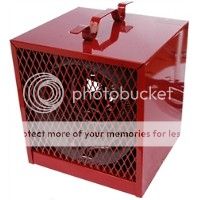Keith_M
Jedi Knight
Offline
I put a passive solar air heater (doesn't use any electric at all) on my workshop (south wall), and on my kitchen south wall. Heats the kitchen to 80F on a sunny winter day when the outdoor temp is around 20F. Heats workshop (not insulated) from 20F to around 65F. Almost exactly like this:
Edit: total cost for parts - $35. (plastic sheeting, 2x4s, air ducts)
Note to Keith M: I'm about to grill hamburgers.
The passive solar is a good idea, and I would love to be able to put something like this in my shop. The design you show in the picture might work, but I'll look at some other designs too.
And I'll be right over for burgers. I'll have a little cheese on mine if you have it.

 Hi Guest!
Hi Guest!

 smilie in place of the real @
smilie in place of the real @
 Pretty Please - add it to our Events forum(s) and add to the calendar! >>
Pretty Please - add it to our Events forum(s) and add to the calendar! >> 


 PJ
PJ

